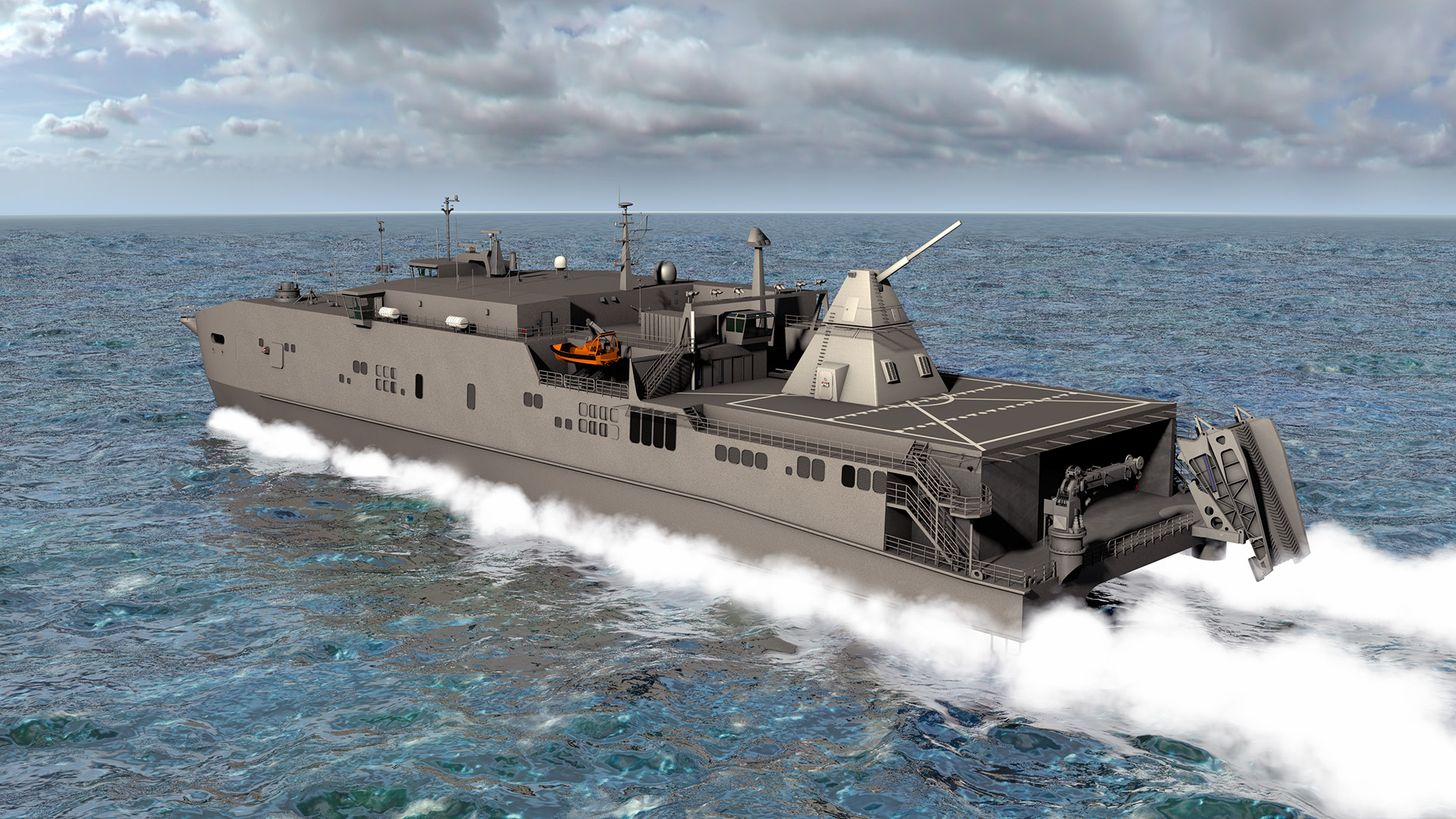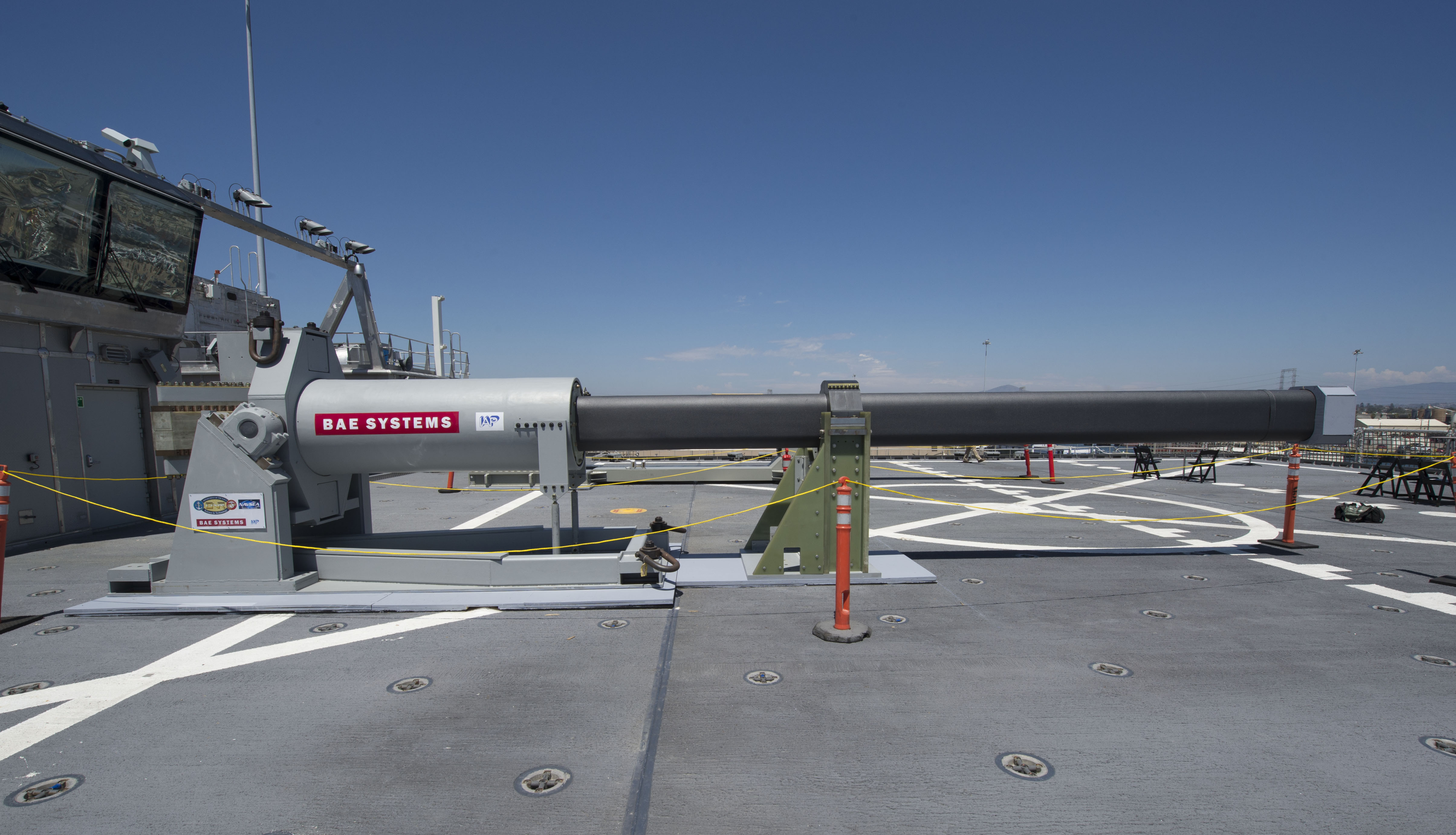
Next year Naval Sea Systems Command will conduct the first at sea test of its electromagnetic railgun, hurling a guided 44 pound projectile and hypersonic speeds off the coast of Florida, NAVSEA officials said on Tuesday.
The BAE Systems designed test weapon will be mounted on the newly delivered Joint High Speed Vessel USNS Trenton (JHSV-5) and taken to Eglin Air Force Base’s maritime test range off the Florida panhandle late in the summer of 2016. The Navy originally planned to use the JHSV USNS Millinocket (JHSV- 3) for the test.
“It’s a naval surface fire support demonstration, the Navy’s first to engage an over the horizon target [with a railgun],” Capt. Mike Ziv, NAVSEA’s program manager directed energy and electronic warfare program office told attendees at the Navy’ League’s Sea-Air-Space 2015 Exposition.
The test will validate the assumptions the Navy has made in the decades-old pursuit of the railgun not only as a long range weapon to support troops ashore but start testing new ideas of using the weapon as an anti-surface warfare (ASUW) weapon, a ballistic missile defense (BMD) tool and as a close in weapon system for cruise missile threats.
NAVSEA outlined the expanded mission set for the railgun — beyond naval surface fire support — in a request for information issued earlier this year.
Traditionally, the Navy has used missiles to intercept targets but the railgun promises similar results for less money.
“There’s a tradition that every time an enemy throws a threat at us our counter to that threat is one order more of magnitude expensive than the threat costs. This is a technology where we’re engaging threats at similar probabilities of kill for a cost that’s about two orders of magnitude less,” Ziv said.
“Looking that the missions sets the railgun will be able to achieve the ship or land based facility, it will be able to store a lot more rounds and consummate a lot more engagements than a traditional missile-type system.”
NAVSEA is also working with the Office of the Secretary of Defense (OSD) to create a modular railgun system for both at sea and on land.

The Florida test will place a static floating target at a range of 25 to 50 nautical miles from the test ship and fire five GPS guided hyper velocity projectiles (HVP) at the target as the final part of 20 planned firings for the railgun at the Eglin range.
“It’s an over the horizon engagement. We’re firing on a ballistic trajectory and guiding into intercepting that target,” he said to reporters following the briefing.
“Eventually when we have a little bit more advancement in the projectile there will be some ability to communicate with [the round].”
As the program develops, the Navy is zeroing in on about 10,000-ton sized guided missile cruisers and destroyers as the anticipated platforms to field the weapons.
NAVSEA is currently conducting an in-depth study of including the railgun on the Zumwalt-class (DDG-1000) guided missile destroyers for the first platform for the weapon.
Earlier this year, Vice Adm. William Hilarides indicated his preffered option would be the third Zumwalt — Lyndon B. Johnson (DDG-1002) — currently under construction at General Dynamics Bath Iron Works (BIW).
The integrated power system (IPS) on the 16,000-ton ships– powered by two massive Rolls Royce MT-30 gas turbines and two smaller Rolls-Royce RR450 much more electrical power than the current crop of U.S. destroyers and cruisers.
“They all believe that’s the right ship but I don’t want to get ahead of ourselves we do need the right analysis to say ‘yes’,” Ziv said.
“I plan to have that study done by the end of this fiscal year.”
The eventual goal is to have an operational 32 megajoule weapon that would be capable of firing a guided round almost a hundred nautical miles by the mid 2020s.





